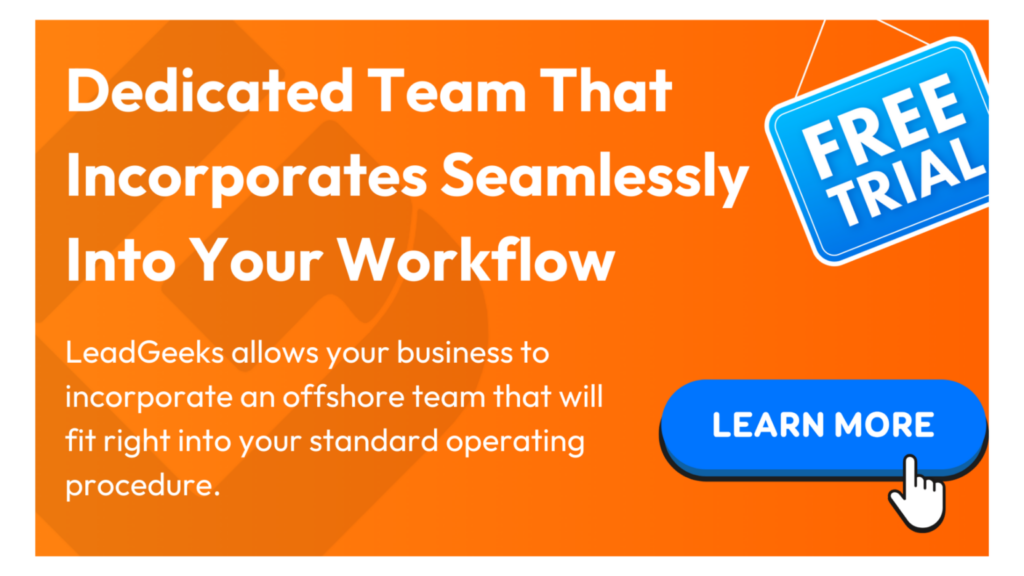In life sciences, where purchase decisions often involve multiple stakeholders and long sales cycles, digital tactics play a critical role in driving qualified opportunities. Traditional networking at conferences and trade shows remains valuable, but digital channels now provide scalable, measurable, and highly targeted ways to attract, nurture, and convert prospects.
This blog explores actionable digital tactics that align with the realities of life science B2B lead generation, from optimizing your visibility on search engines to deploying tailored email campaigns that resonate with researchers and executives alike.
SEO for Niche Scientific Audiences
Search engine optimization (SEO) remains one of the most cost-effective tactics for life science B2B lead generation because it matches intent with visibility. Unlike broad industries, scientific audiences rely on precise, technical terminology when searching online. A procurement manager searching “single-use bioreactor vendor Europe” or a researcher typing “optimized CRISPR Cas9 delivery method” isn’t browsing casually—they are signaling high purchase intent. Capturing this traffic means positioning your content exactly where and how these audiences are searching.
Here are practical ways to build SEO in life sciences:
1. Deep-Dive Keyword Research for Technical Audiences
Generic keyword tools often underestimate the value of technical queries due to low search volumes. Yet, those low-volume terms often represent the highest-value leads.
- Tools: Beyond Google Keyword Planner, lean on SEMrush, Ahrefs, or even PubMed/Google Scholar to see common terminology used in papers. Pair this with AnswerThePublic or AlsoAsked for niche variations.
- Competitor Gap Analysis: Identify competitors ranking for terms like “cGMP fermentation service provider.” If they’re capturing organic visibility, you should assess if that’s an opportunity to position your own services.
- Layered Targeting: Build a hierarchy of keywords—broad awareness terms (e.g., “bioprocess optimization”), mid-funnel (e.g., “pilot-scale fermentation systems”), and bottom-funnel transactional terms (e.g., “buy bioreactor online”).
2. Segment Content for Stakeholder Needs
The life sciences purchase journey is complex—procurement officers, lab managers, and researchers each search differently. Instead of one-size-fits-all content, map content to their search intent and role-specific pain points:
- Researchers want protocol optimizations, case studies, and application notes (e.g., “best practices in CHO cell line development”).
- Procurement teams search with ROI and compliance in mind (e.g., “ISO-certified antibody supplier” or “cost-effective peptide synthesis vendors”).
- Executives/decision-makers look for scalability, partnerships, and innovation narratives.
Practical approach: Create dedicated landing pages for each audience segment, each optimized for their unique keywords. For example, a CRO might publish:
- A blog series on troubleshooting assays for researchers.
- A “cost-benefit analysis” page for procurement.
- A thought leadership article on industry trends for executives.
3. On-Page and Technical SEO with Scientific Precision
For scientific audiences, credibility and clarity are non-negotiable. Technical SEO ensures your content is discoverable, readable, and trusted.
- Schema Markup: Add structured data for product specs (e.g., dimensions, purity grades, certifications) so Google displays rich snippets. This not only improves rankings but also builds trust.
- Meta Descriptions: Write descriptions with specific technical phrasing, e.g., “ISO-certified recombinant protein expression services for biotech R&D teams.” This resonates far more than generic copy.
- Mobile + Lab Readiness: Many researchers browse on lab tablets or laptops. Optimize pages for fast load speeds, minimal distractions, and downloadable PDFs for offline access.
- Internal Linking: Connect technical blog posts to solution pages (e.g., “CHO cell line troubleshooting” → “Protein Expression Services”), guiding readers along the funnel.
4. Building Scientific Authority with Backlinks
In science, authority is earned through credibility signals. Backlinks from reputable industry sites validate your expertise in ways generic SEO can’t replicate.
- Partnership Publications: Co-author whitepapers with universities, labs, or industry collaborators, then publish on both sites.
- Guest Blogs & Industry Portals: Contribute to platforms like Genetic Engineering & Biotechnology News, BioProcess Online, or trade association blogs.
- Conference Content Recycling: Convert posters, talks, or abstracts from scientific conferences into optimized blog posts or gated assets. When cited by attendees or institutions, they naturally generate backlinks.
- Resource Libraries: Hosting downloadable SOPs, assay guides, or compliance checklists often earns organic links from university labs or research communities.
5. Tracking SEO ROI for Life Sciences
SEO must connect back to qualified lead generation, not just traffic. Set up tracking beyond clicks:
- Tag forms by campaign keyword to measure which terms drive demo requests or quote inquiries.
- Use heatmaps (e.g., Hotjar) to see if researchers interact with technical data sheets.
- Monitor conversions via CRM integration—if “recombinant protein CRO” brings MQLs, double down with more content around CRO offerings.
The payoff: When life science professionals begin their digital research journey, your optimized content ensures your brand is visible as an authoritative, trustworthy solution. In industries where decision cycles are long and credibility is key, this visibility can directly translate into qualified leads and lasting partnerships.
Using Paid Campaigns to Reach Researchers and Decision-Makers
Paid campaigns—whether through Google Ads, LinkedIn Ads, or industry-specific platforms—are one of the fastest ways to get in front of life science professionals who are actively searching for solutions or evaluating vendors. Unlike general B2B markets, life science audiences are narrower, highly specialized, and require precise targeting. That means throwing money into broad ads rarely works—you need data-driven precision.
Here’s how to make paid campaigns for life science B2B lead generation both effective and cost-efficient:
1. Precision Keyword Targeting on Google Ads
Researchers and procurement teams often use long-tail, highly technical keywords when searching for vendors. For example, instead of “cell culture media,” they may search for “serum-free media for CHO cells under GMP conditions.”
- Actionable Tip: Use phrase match and exact match keyword types to capture these queries without wasting budget on irrelevant clicks.
- Avoid Broad Waste: For example, bidding on “protein expression” might waste budget by pulling in students writing term papers instead of biotech purchasing teams.
Pro insight: Set up negative keywords like “jobs,” “pdf,” or “review article” to avoid traffic from researchers simply looking for academic references.
2. Paid Social Campaigns (LinkedIn and Niche Platforms)
LinkedIn is the most powerful channel for B2B targeting in life sciences because it allows you to filter by job title, seniority, company size, and research focus.
- Example audiences: “Principal Scientist – Bioprocess Development,” “Procurement Director – Biopharmaceutical Manufacturing,” or “VP of R&D.”
- Ad Types to Test:
- Sponsored InMail → Works well for sharing whitepapers or invitations to webinars.
- Sponsored Content → Case studies and technical blog posts build thought leadership.
- Lead Gen Forms → Integrates directly with LinkedIn, reducing friction.
Pro insight: Don’t overlook niche communities such as Scientist.com, ResearchGate Ads, or LabX, where researchers already look for solutions.
3. Segmented Campaign Messaging
Not every life science professional responds to the same messaging. A postdoc scientist might care about workflow efficiency, while a procurement officer is focused on compliance and cost.
- Best Practice: Run segmented ad sets that test messaging for each stakeholder.
- Researcher-focused: “Accelerate your assay workflow with automated ELISA platforms.”
- Procurement-focused: “Reduce cost of consumables with GMP-compliant suppliers.”
Pro insight: Use dynamic keyword insertion (DKI) in Google Ads to automatically adjust ad copy for each technical query.
4. Conversion-Optimized Landing Pages
Driving traffic is only half the battle—conversion happens on the landing page.
- Best Practice Elements:
- Short, clear headline using the keyword (“High-Purity Recombinant Proteins for Bioprocess Applications”)
- Easy access to technical datasheets, protocols, or product comparison tables
- Minimal form fields—ask only for name, email, and organization to reduce friction
- Proof points like application notes, case studies, and customer logos
Pro insight: Create stakeholder-specific landing pages. A “Bioprocess Scientist” page might highlight performance data, while a “Procurement Officer” page emphasizes cost savings and compliance certifications.
5. Tracking and Measurement
Life science sales cycles are long—sometimes 6–18 months. That means you can’t just measure “last-click conversions.”
- Track multi-touch journeys with UTM tagging across ads, webinars, and email follow-ups.
- Use Google Tag Manager or HubSpot to track micro-conversions like datasheet downloads or webinar signups—these are strong buying signals.
- Retargeting: Run retargeting ads specifically for visitors who viewed high-intent pages like “Request a Quote” but didn’t convert.
Pro insight: Set up a lead quality feedback loop with your sales team. If they report poor-fit leads from certain campaigns, refine your targeting immediately rather than burning budget.
The Outcome
Paid campaigns, when executed with precision, put your message directly in front of scientists and decision-makers at the exact moment they’re looking for solutions. Instead of broad, wasted impressions, every click and lead is filtered for relevance—helping your sales team engage with prospects that already show high intent.
The Power of LinkedIn in Scientific Networking
For professionals in the life sciences, LinkedIn is more than a social network—it’s a dynamic platform where scientific credibility meets business development. Unlike traditional academic forums or industry conferences, LinkedIn offers the chance to engage decision-makers, researchers, and industry partners on a daily basis. Done strategically, it becomes one of the strongest tools for life science B2B lead generation.
Optimizing Your Company and Personal Profiles
First impressions matter. A fully optimized profile signals professionalism and builds trust:
- Company Page: Highlight niche expertise in your tagline (“Accelerating Cell Therapy Scale-Up” is stronger than “Biotech Solutions”). Add case studies, service spotlights, and industry news to your content mix.
- Personal Profiles: For business developers or scientists, showcase thought leadership by listing publications, speaking engagements, and areas of expertise. A clear headline (“Helping Biopharma Scale Fermentation Processes”) immediately frames your value.
Content Strategy: Speak to Both Science and Business
LinkedIn’s algorithm favors content that sparks conversation, so posting is not just about visibility—it’s about creating engagement.
- Educational Posts: Share short insights into emerging technologies (e.g., CRISPR delivery challenges or bioprocess automation trends).
- Case Snapshots: Instead of lengthy whitepapers, condense results into digestible graphics or carousels that highlight outcomes like “30% faster downstream purification.”
- Video & Webinars: LinkedIn’s video posts or live sessions can humanize your team, letting prospects see real scientists discuss challenges they’re solving.
Consistency is key—posting 2–3 times a week keeps your brand in front of the right audience without overwhelming them.
Leveraging LinkedIn Ads for Targeted Outreach
LinkedIn Ads excel where broad channels fail: precision targeting. You can filter by job titles (e.g., Bioprocess Engineer, Principal Scientist), industry (biopharma, CROs, medical devices), and even group memberships.
- Sponsored Content: Promote case studies or gated assets like whitepapers to generate leads.
- Message Ads: Deliver direct, personalized invitations to webinars or product demos.
- Retargeting: Use LinkedIn’s Matched Audiences to re-engage visitors who interacted with your site but didn’t convert.
This level of granularity ensures your spend only goes toward profiles that closely resemble your ICP.
Networking Through Groups and Direct Engagement
Life science professionals often gather in specialized groups (“Bioprocessing Professionals,” “Cell and Gene Therapy Leaders”). Joining and contributing to these groups not only drives visibility but also subtly positions your team as a trusted voice within the community.
For direct outreach, connection requests should avoid the generic “I’d like to add you to my network.” Instead, anchor the request in shared context:
- “Noticed your work in single-use bioreactors—I’d love to exchange insights on scaling challenges in cell therapy manufacturing.”
Following up with value-driven insights (rather than immediate sales pitches) opens the door to meaningful conversations that eventually turn into leads.
Tracking, Measuring, and Improving
Like any digital tactic, success on LinkedIn depends on data:
- Monitor engagement rates (comments, shares, saves) to see what content resonates.
- Track connection acceptance rates to refine your outreach messaging.
- Use LinkedIn’s Campaign Manager to measure CTR, cost per lead, and audience quality—then adjust targeting and creative based on results.
The Outcome
With consistent, intentional use, LinkedIn becomes more than just a networking platform—it transforms into a scalable channel for building trust, authority, and qualified opportunities in the life sciences sector.
Personalization in Cold Email Outreach
Cold email remains one of the most reliable channels in life science B2B lead generation, but it’s also one of the most saturated. Executives, researchers, and procurement managers receive dozens of unsolicited emails every week—most of which end up ignored or deleted. The differentiator is personalization. Done correctly, personalization signals relevance, respect for the recipient’s time, and an understanding of their world.
The Three Levels of Personalization
Not every campaign requires hyper-customization, but every campaign must show effort. Personalization can be approached in tiers:
- Surface-Level Personalization
- Using the recipient’s name, company, or job title.
- Example: “Hi Dr. Chen, I noticed you’re leading upstream processing at [Company].”
- Best for: Larger-scale outreach when volume is important.
- Contextual Personalization
- Tying your message to something specific about the recipient’s role, company, or recent activity.
- Example: “I saw your team recently expanded into microbial fermentation—how are you managing downstream purification bottlenecks?”
- Best for: Mid-volume campaigns targeting ICP-fit accounts.
- Deep Personalization (Hyper-Personalization)
- Referencing a published paper, a conference presentation, or a recent funding announcement.
- Example: “I read your co-authored paper on continuous chromatography in Biotechnology Progress. We’ve seen several of our clients struggle with scale-up in similar processes—curious how your team is approaching it?”
- Best for: High-value accounts where relationship-building is the goal.
Framework for Structuring a Personalized Cold Email
Every cold email should balance clarity, brevity, and personalization. A simple structure works:
- Hook (Personalized Opening)
Show you’ve done your homework. Reference a role responsibility, company initiative, or industry trend relevant to them. “Noticed your team recently secured Series B funding to expand your bioreactor facility—congratulations.” - Value Proposition (Problem-Solution Fit)
Bridge your solution to their reality. Keep it concise and specific. “Several biopharma teams we work with struggled with media optimization during scale-up. Our platform reduced their experimental runs by 25%.” - Proof (Credibility Signal)
Anchor your claim in data, case studies, or logos. “We’ve supported companies like [well-known client] through similar expansions.” - CTA (Call to Action)
Keep it low-commitment and focused on a next step. “Would you be open to a 15-minute call to compare approaches?”
Tools That Make Personalization Scalable
Manual research works for top-tier accounts, but personalization at scale requires smart tooling:
- LinkedIn + Apollo/Snov.io: For scraping role-based context and recent activities.
- Google Scholar Alerts: To track when a scientist publishes new research.
- AI Writing Assistants: To draft message variations once the research nugget is identified (but always refine manually).
- CRM + Enrichment Tools: Platforms like HubSpot or Clearbit auto-fill company updates (funding, hiring, product launches).
These tools cut research time from 15 minutes per prospect down to 2–3 minutes without losing authenticity.
Common Pitfalls to Avoid
- Over-Personalization: Mentioning obscure details (e.g., “I saw you like hiking in the Alps”) feels invasive and irrelevant.
- Too Much Detail Upfront: Emails are skimmed. Avoid overwhelming with technical jargon in the first touch.
- Generic CTAs: “Let’s connect” or “Check out our website” doesn’t move the conversation forward.
Measuring and Optimizing Personalization Efforts
- Reply Rate: Strong personalization should lift replies well above the industry average of 2–3%.
- Positive vs. Negative Responses: Track whether replies are genuine interest or polite declines.
- Conversion to Meetings: Ultimately, personalization is only effective if it moves the lead down the funnel.
The Outcome
Personalized cold outreach signals to your target audience that you’re not just another vendor casting a wide net—you’re a potential partner who understands their challenges. In life sciences, where scientific nuance and trust are everything, that difference can turn a cold prospect into a warm opportunity.
Using Webinars and Whitepapers as Lead Magnets
Got it — let’s expand the “Using Webinars and Whitepapers as Lead Magnets” section to the same in-depth, practical level as the others:
Using Webinars and Whitepapers as Lead Magnets
In life science B2B lead generation, trust and authority matter as much as visibility. Researchers, lab managers, and executives don’t make purchasing decisions on impulse; they rely on data, peer insights, and technical validation. That’s why webinars and whitepapers serve as some of the most effective lead magnets—they offer educational value while positioning your company as an expert worth engaging with.
Why Webinars Work in Life Science Marketing
Webinars bring the human element into the digital funnel. Unlike static blog posts, they allow real-time interaction, live demonstrations, and Q&A sessions. For scientific audiences, this is especially compelling because it mirrors the academic environment they’re used to—seminars, conferences, and poster sessions.
Practical steps for effective webinars:
- Choose topics with real scientific value. Focus on subjects like “Scaling Up Bioreactor Processes” or “Data Integrity in Genomic Analysis Pipelines.” Avoid overt sales pitches; instead, showcase applied expertise.
- Invite credible speakers. Researchers respond better to industry peers or scientists with academic or industry credentials. Co-hosting with a client or academic collaborator adds legitimacy.
- Segment your promotion. Use LinkedIn ads to target titles like Principal Investigator, Director of Bioprocessing, or Procurement Manager. Tailor messaging to each—researchers care about methodology, while executives focus on ROI.
- Make it interactive. Live polls, Q&A, or showing data analysis workflows helps keep participants engaged and increases perceived value.
- On-demand follow-up. Record and gate the webinar for on-demand access. This extends its lifespan and becomes a continuous source of leads beyond the live session.
Why Whitepapers Still Convert
Whitepapers remain one of the most powerful tools in life science B2B lead generation because they combine depth with authority. Unlike short blog posts, they provide in-depth analysis, technical validation, and case studies—exactly what scientific buyers want before committing to a solution.
Best practices for whitepapers:
- Solve a technical challenge. A paper on “Reducing Variability in CRISPR Screening” will attract a very targeted, high-intent audience.
- Use data, not just claims. Include graphs, validation results, or case comparisons. Scientists will dismiss vague marketing, but they respect hard evidence.
- Gate strategically. Require minimal information (e.g., name, role, email, organization) to reduce friction. You can progressively profile leads later with nurturing campaigns.
- Collaborate for credibility. Co-authoring with a university lab, biotech partner, or thought leader significantly increases trust.
- Promote across channels. Post snippets on LinkedIn, distribute through industry newsletters, and repurpose into infographics or video summaries.
How to Connect Webinars and Whitepapers into One Funnel
The most powerful approach is integrating webinars and whitepapers into a single lead-generation sequence:
- Pre-Webinar: Promote registration with a related whitepaper (e.g., sign up for the webinar and get early access to the paper).
- During Webinar: Reference data or case studies from the whitepaper to strengthen credibility.
- Post-Webinar: Send attendees the whitepaper as a follow-up, alongside an invitation to book a meeting or demo.
- For No-Shows: Share the recording plus gated access to the whitepaper, ensuring you still capture value from registrations.
Measuring Impact
To ensure ROI from these efforts, track:
- Conversion rates (registration → attendance → follow-up downloads).
- Engagement depth (questions asked, time spent on webinar, number of pages read in whitepaper PDFs if hosted with analytics tools like HubSpot or PDF tracking software).
- Lead quality (number of MQLs/SQLs generated, pipeline revenue influenced).
When executed well, webinars and whitepapers don’t just collect emails—they filter for the most engaged, informed, and qualified leads, moving them closer to sales conversations with significantly higher trust.
Final Thoughts
Life science companies operate in a specialized and competitive environment where sales cycles are long, and buyer trust is critical. By combining SEO for technical visibility, precise paid campaigns, LinkedIn networking, personalized outreach, and content-driven lead magnets, businesses can build sustainable pipelines of qualified leads.
The key is integration—no single tactic works in isolation. A scalable digital strategy connects each touchpoint, ensuring that prospects experience a seamless journey from first search to final purchase.
If you find what you are reading so far interesting, why not check us out to read more? We keep up-to-date with the tips, tricks and strategies of B2B Digital Marketing every single week in our blog! Click here to get started!














Leave a Reply